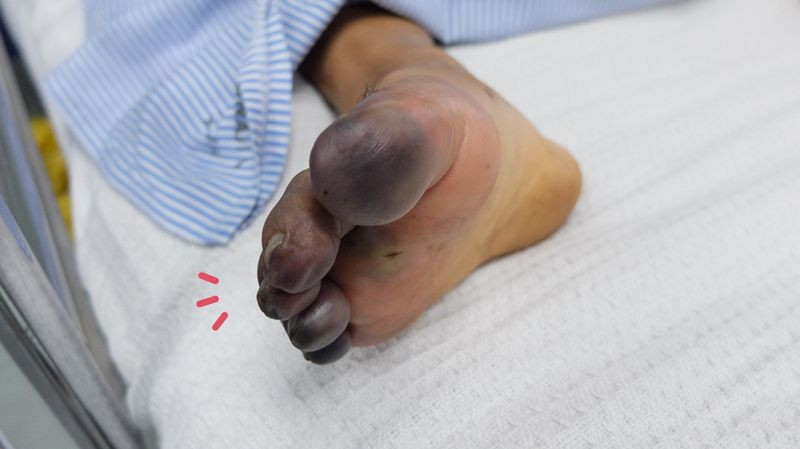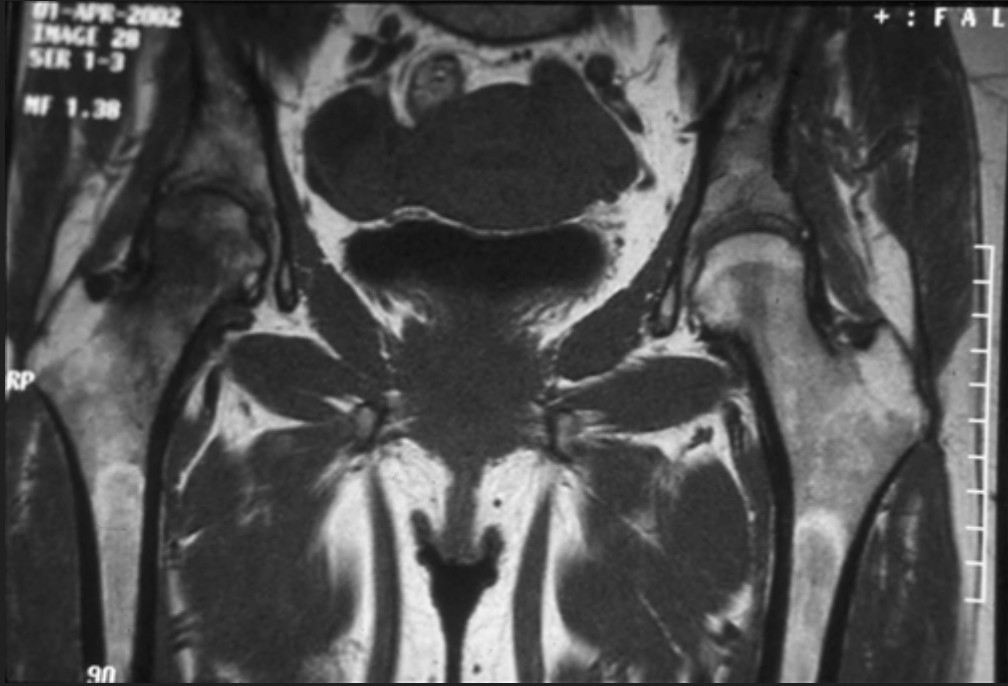Definition
Gangrene is a pathological condition characterized by necrosis of tissue resulting from insufficient blood circulation. Gangrene can impact multiple tissues; however, it typically originates in the fingers, thumbs, hands, or feet. Untreated gangrene might result in mortality.
Causes
Gangrene is classified into different types depending on the underlying cause:
Dry gangrene
Hemodynamic disorder, typically resulting from circulatory impairments.
Wet gangrene
Hemodynamic problems are associated with bacterial infections. Exudative lesions are characterized by the discharge of purulent fluid that forms on the surface of the skin. It may disseminate rapidly across multiple tissues.
Gas Gangrene
The bacterium Clostridium is what causes gas gangrene. In muscle tissue, bacteria proliferate, producing toxins and discharging air into the tissue. If left untreated, it can cause mortality within forty-eight hours due to its rapid spread.
Fournier Gangrene
Fournier's gangrene is a medical condition characterized by a rapidly spreading infection of the genital and perineal areas. Penile, scrotal, or perineal infection in the genital and anal regions. It typically manifests in older males.
Intra-abdominal gangrene
The obstruction of blood circulation to internal organs may have an impact on the functions of the gallbladder, large intestine, or digestive tract.
Risk Factor
Diabetes elevates the risk of gangrene. High blood sugar can cause nerve damage that manifests as paralysis or paresthesia in the affected area, making the area more vulnerable to further injuries. Elevated blood glucose levels may also affect blood vessels and block blood circulation to the lower extremities, resulting in a cascade of complications.
Inadequate circulation to the foot can result in a decreased presence of infection-fighting blood cells in that area. The absence of these cells in the affected region will result in a prolonged healing process. Further injuries in this region are more prone to infection.
Besides diabetes, a number of other risk factors include:
- Atherosclerosis: occlusion of blood flow due to the accumulation of plaque in the arteries
- Buerger's disease: inflammation of the blood arteries in the extremities, leading to the formation of blood clots. Consequently, there is a decrease in blood flow Smokers and tobacco chewers usually experience this.
- Peripheral artery disease: plaque accumulation in the body's extremities, obstructing blood flow to the legs, arms, and hands
- Raynaud's phenomenon: cold temperatures may influence the blood vessels in the fingers and thumb. Constriction of blood vessels will restrict the blood flow.
- Lifestyle: Smoking, obesity, hypertension, and excessive alcohol consumption are lifestyle factors that may contribute to nerve injury
If you want to know more about Burger's disease, you can read it here: Burger's Disease - Definition, Cause, Symptoms And Treatment
Symptoms
The following are the primary symptoms of gangrene (both dry and wet):
- Discoloration: the affected area or limb will experience discoloration, appearing dry and black. In dry gangrene, the color transition will occur from red to black, while in wet gangrene, there will be edema and the presence of a terrible odor. Gas gangrene is characterized by the production of abnormal malodorous smells and the presence of brownish pus.
- The skin has a lustrous texture and exhibits desquamation, which results in the formation of a distinct borderline between the affected area and the unaffected skin.
- Pain at the extremities, followed by a loss of sensation and paralysis
- Erythematous and edematous skin
Diagnosis
To diagnose gangrene, the doctor will conduct an anamnesis or medical interview, perform a physical examination, and order additional tests.
Anamnesis
A medical interview refers to a structured exchange of questions and answers between the doctor and the patient. The doctor will inquire about:
- Chief complaint
- Additional complaints
- Past medical history
- History of treatment
- Family medical history
Physical Examinations
The doctor will perform a comprehensive and specific physical assessment. As part of a comprehensive physical examination, the doctor will assess the patient's blood pressure, respiration rate, pulse, and body temperature. During the specific examination, the doctor will assess the skin for indications of gangrene.
Additional Examinations
The doctor may recommend additional investigations to analyze and validate the diagnosis of gangrene. Diagnostic examinations to diagnose diabetic gangrene include:
- Hematological examinations to assess the presence of an infection
- Bacterial culture analysis is performed to identify the specific bacteria responsible for the infection and determine the appropriate drugs for treatment (if applicable)
- Diagnostic imaging techniques such as CT scans or MRIs are used to verify the diagnosis and assess the extent of gangrene.
- Assessment to evaluate the circulation in the impacted region
Management
Emergency eradication of the infected tissue is essential for diabetic gangrene. A number of treatment options are available. The physician will decide on the most effective treatment or combination of treatments for your gangrene based on the severity.
- Eliminate the infected or dead tissue
- Prevent and cure infections in order to prevent gangrene transmission
- Improving vascularization
The doctor may recommend the following as gangrene treatments:
Tissue lifting
The doctor might conduct a cleansing procedure. A surgical procedure is required to eliminate the injured tissue. To repair gangrene-related damage, the doctor might also suggest skin grafting. The procedure involves transferring healthy skin from another part of the body to the injured location. Laboratory-developed larvae may eliminate the damaged tissue. After applying maggots to the laceration, the doctor will bandage the affected area. Maggots can consume deceased tissue without causing damage to living tissue. This procedure requires multiple days. In severe cases, the physician may advise the amputation or removal of the infected foot, finger, thumb, or affected area.
Infection control
Antibiotics are required for the treatment of gangrene-causing infections. The doctor will determine the suitable dosage for a specific condition.
Improving vascularization
The doctor may perform angioplasty and bypass surgery (during which the doctor will create a new pathway for blood to flow properly and inflate tiny balloons within your blood vessels to dilate them and facilitate better blood flow) as surgical interventions to improve blood flow.
Complications
Inadequate treatment and care for gangrene may lead to a severe infection known as sepsis. Sepsis may contribute to further complications, including:
- Changes in mental status
- Life-threatening hypotension
- Organ failure
- Death
You can read about liver failure here: Heart Failure - Definition, Cause, Symptoms And Treatment
Prevention
There are numerous ways to prevent diabetic gangrene and enhance blood flow. If you have risk factors such as diabetes or peripheral artery disease, you may:
- Exercise regularly while protecting your feet
- Control blood sugar levels
- Healthy eating includes low-fat and low-cholesterol foods
- Improve the knowledge regarding the diabetic complications that may impact the foot
- Stop smoking and drinking excessively
- Check your feet for wounds regularly
- Prevent barefooting, especially outdoors
- Regularly clean and moisturize your feet
- Wear fit-size socks and shoes
When to See a Doctor?
Schedule regular checkups, particularly if you have a high risk of developing gangrene. Immediately contact the hospital if you develop any of the following symptoms:
- Tachycardia and weakened pulse
- Confusion
- Pale and frigid skin
- Dyspnea
- Vomiting or diarrhea
Want to know more information about other diseases? Click here!
- dr. Monica Salim
Gangrene. (2022). Retrieved 02 January 2023, from https://www.mayoclinic.org/diseases-conditions/gangrene/symptoms-causes/syc-20352567#
Gangrene and Diabetes : Know the Facts. (2016). Retrieved 02 January 2023, from https://www.healthline.com/health/gangrene-diabetes
What you Need to Know About Gangrene. (2017). Retrieved 02 January 2023, from https://www.medicalnewstoday.com/articles/158770
Gangrene. (2022). Retrieved 02 January 2023, from https://www.nhs.uk/conditions/gangrene/causes/
Gangrene. (2022). Retrieved 02 January 2023, from https://my.clevelandclinic.org/health/diseases/21070-gangrene








